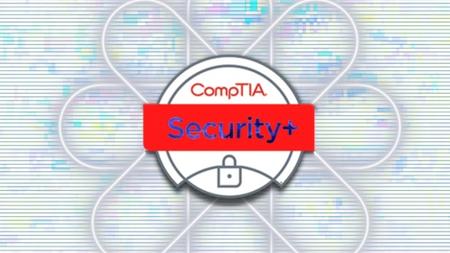English | MP4 | AVC 1920×1080 | AAC 44KHz 2ch | 79 Lessons (8h 52m) | 3.90 GB
Go from complete beginner to acing the globally-recognized CompTIA Security+ certification exam. You’ll learn the latest best practices and how to pass the exam so that you can springboard into your Cybersecurity career. No previous knowledge required.
We guarantee you that this is the most efficient and up-to-date CompTIA Security+ Bootcamp course that you can find. You’ll learn best practices and exactly what is needed to ace the certification so that you can springboard into your cybersecurity career and get hired as a Security Administrator, Systems Administrator, Security Engineer + more!
WHAT YOU’LL LEARN
- Learn how to ace the CompTIA Security+ exam from scratch
- Deeply understand the information tested by the Security+ certification
- Use the Security+ certification to springboard your career into entry and intermediate-level Cyber Security jobs
- Have the skills and understanding to confidently apply for Cyber Security jobs
- Become a Security Engineer, Systems Administrator, Network Administrator, Security Administrator,
- Security Consultant, Security Specialist, or IT Auditor
- Master Cyber Security best practices and techniques to become a Top 10% Cyber Security Engineer
Table of Contents
1 CompTIA Security+ Certification Bootcamp
2 Introduction
3 What Is Security+_
4 How To Succeed
5 Security Basics and CIA Triangle
6 The Power of Control, Different Types of Control
7 Different Types of Identity – Identification
8 Account Access Control and Privilege Management
9 File Access Control (Windows, Linux)
10 AAA Servers
11 Different Types of Authentication and Authentication Management
12 Different Existing Authentication and Authorization Mechanisms
13 Account Control Practices and Policies
14 OSI Model
15 Honeypots, Proxy Servers, Jump Servers, Load Balancers
16 Routers, Switches, ACL, Loop Protection
17 Firewalls
18 Network Segmentation
19 IDS, IPS, NAC
20 DNS, DNS Security
21 IP Addresses
22 Dynamic Host Configuration Protocol (DHCP)
23 Virtual Private Network (VPN)
24 Networking Tools – Commands
25 File Manipulation Tools – Commands
26 Forensic Tools – Commands
27 Transmission Control Protocol (TCP) and User Datagram Protocol (UDP)
28 Unsecure Protocols
29 Secure Protocols
30 Wireless Infrastructure
31 Wireless Encryption and Threats
32 Wireless Authentication Protocols
33 Mobile Device Connection and Communication Methods
34 Mobile Device Management
35 Mobile Device Monitoring and Protection
36 Virtualization Theory
37 Virtual Box Demonstration
38 Cloud Technology
39 Cloud Services
40 Storing Data in Cloud and Cloud Security
41 Physical Security
42 What is Penetration Testing_
43 Different Phases of a Penetration Test
44 Different Teams in Cyber Security
45 Vulnerabilities
46 Monitoring
47 Exercise Imposter Syndrome
48 Different Types of Attackers
49 Different Types of Malware
50 Social Engineering, Phishing
51 Network Attacks
52 Physical Attacks
53 Password Attacks
54 Overflow Attacks, Pointer Dereference, Error Handling
55 Application Attacks, Injection Attacks
56 Zero Days and Weak Configurations
57 Hijacking Attacks
58 Cryptographic Attacks
59 Third Party Attacks
60 Host Security Boot
61 Endpoint Protection Strategy
62 System Hardening
63 Inbuilt Devices and Specialized Devices
64 Secure Application Development and Secure Coding
65 Concept of Risk and Risk Types
66 Risk Control and Analysis
67 Business Impact Analysis
68 Security Information Groups and Sources
69 Facility Policies and Rules
70 Laws and Standards
71 Data Handling
72 Incident Response and Recovery Practices
73 Information Gathering for Incident Response
74 Controls and Techniques for Lowering Risk
75 Redundancy and Tolerance
76 Symmetric and Asymmetric Encryption
77 Concept of Public Key Infrastructure
78 Important Cryptographic Terms and Concepts
79 Thank You!
Resolve the captcha to access the links!
